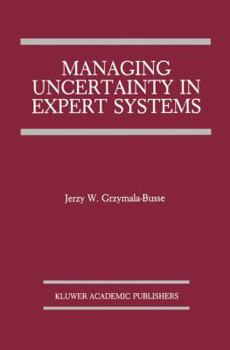Managing Uncertainty in Expert Systems
Select Format
Select Condition 
Book Overview
3. Textbook for a course in expert systems, if an emphasis is placed on Chapters 1 to 3 and on a selection of material from Chapters 4 to 7. There is also the option of using an additional commercially available sheU for a programming project. In assigning a programming project, the instructor may use any part of a great variety of books covering many subjects, such as car repair. Instructions for mostofthe "weekend mechanic" books are close stylisticaUy to expert system rules. Contents Chapter 1 gives an introduction to the subject matter; it briefly presents basic concepts, history, and some perspectives ofexpert systems. Then itpresents the architecture of an expert system and explains the stages of building an expert system. The concept of uncertainty in expert systems and the necessity of deal- ing with the phenomenon are then presented. The chapter ends with the descrip- tion of taxonomy ofexpert systems. Chapter 2 focuses on knowledge representation. Four basic ways to repre- sent knowledge in expert systems are presented: first-order logic, production sys- tems, semantic nets, and frames. Chapter 3 contains material about knowledge acquisition. Among machine learning techniques, a methodofrule learning from examples is explained in de- tail. Then problems ofrule-base verification are discussed. In particular, both consistency and completeness oftherule base are presented.
Format:Hardcover
Language:English
ISBN:0792391691
ISBN13:9780792391692
Release Date:July 1991
Publisher:Springer
Length:224 Pages
Weight:1.18 lbs.
Dimensions:0.6" x 6.1" x 9.2"
Customer Reviews
2 ratings
Excellent book
Published by Thriftbooks.com User , 18 years ago
Very complete book. It explains everything in a language that is easy to understand and it gives a nice overview of Expert Systems.
An introduction to Expert systems and methods
Published by Thriftbooks.com User , 23 years ago
I actually took the course that this book is the textbook for, with Dr. Grzymala-busse as my professor, at the University of Kansas. I had studied with him a year earlier on a research project in rules-based programming, when he was putting together the notes for it, so I feel quite fortunate in having seen it coming together.The book itself is an extremely lucid, point-by-point introduction to the logical methods used in deriving and interpreting the rules and data in rule-based expert systems. It covers classification, elimination of redundant data and outliers, ruleset reductions, systems that manage probability ranges with fuzzy and bayesian logic, data collection from human experts (by interview or observation), and learning and teaching systems. These are the foundations of Knowledge Engineering, one of the branches of Artificial Intelligence.All in all, this material is necessary background for anyone who is going to be implementing a rules-based (or partially rules-based) system of almost any kind. It will, step-by-step, teach you what the design choices are and how to use various different systems most effectively.Dr. Grzymala-Busse is very consistent with his approach of first presenting the problem, then the theory, then several approaches, then at least one fully-formed algorithm for a solution. Most of the chapters contain pseudocode, to make the solutions presented absolutely clear. He also reviews the approaches taken by real-world workers and systems and places each in context with its problem and its theory. All in all, it's an excellent book. The reason it gets four stars instead of five is because it's not a complete reference for a modern KE; there are a lot of techniques outside of the rules-based methodology that a modern KE needs to be familiar with, and while this book is an authoritative reference on handling uncertainty in rules-based systems, it is relatively silent on systems which are non rules-based. As Dr. Busse said at the time, "systems which seem to work, but where we cannot say with certainty why, or systems about which little can be proven, will be excellent and interesting subjects for other books."






